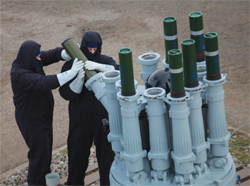The 2011 Shortlist - Defence and Security

FRONTLINE OXYGEN
Cambridge Design Partnership, Centre for Defence Enterprise
The chance of survival for an injured soldier increases dramatically if they receive oxygen, but it is neither safe nor practical to carry heavy, pressurised cylinders onto the battlefield. The first hour after injury – the ’golden hour’ – is when intervention is most valuable.
Technical consultancy Cambridge Design Partnership, working with the Centre for Defence Enterprise (CDE), has developed a solution that provides frontline medics with oxygen to dramatically improve survival rates. The product, which has completed the prototype stage, uses a micro-diesel engine instead of a heavy battery to provide the 100W needed to power an oxygen concentrator.
Diesel is far more energy dense than batteries and can be scavenged if necessary from ground-based vehicles or local sources. The company says that just a small amount of diesel in the engine could provide oxygen for four to five hours. The system also has the potential to use the compact engine as an electrical power source to further reduce the battery burden of dismounted soldiers, which can be as high as 11kg.
Register now to continue reading
Thanks for visiting The Engineer. You’ve now reached your monthly limit of premium content. Register for free to unlock unlimited access to all of our premium content, as well as the latest technology news, industry opinion and special reports.
Benefits of registering
-
In-depth insights and coverage of key emerging trends
-
Unrestricted access to special reports throughout the year
-
Daily technology news delivered straight to your inbox










UK Enters ‘Golden Age of Nuclear’
Apologies if this is a duplicate post - a glitch appears to have removed the first one: > While I welcome the announcement of this project, I note...